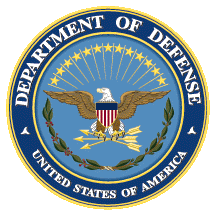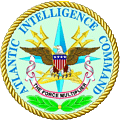





|
The National Military Strategy describes the Joint Intelligence Center, which in the instance of US Atlantic Command is designated the Atlantic Intelligence Command, as "the principal element for ensuring effective intelligence support for combatant commanders in chiefs and theater forces." Secretary of Defense memorandum, 15 March 1991, "Strengthening Defense Intelligence," inter alia, established the JIC as the primary intelligence organization providing support to joint warfighting at all levels. The JIC concept fuses the main support capabilities of all Service, Combat Support Agency, and combat units into a one stop shopping center for intelligence support. The JIC is, by design, scalable and can expand to meet the needs of the Joint Force Commander. During noncrisis periods, JIC manning is normally retained at the minimum level required to perform essential functions such as I&W, current intelligence, collection management, delegated general military intelligence production, and support to the commander. As crises develop, JICs at each echelon bring together personnel and equipment needed to manage intelligence support requirements.
In August 1995 the Central Imagery Office [now part of NIMA] introduced the first in a series of computerized imagery libraries, the Image Product Archive [IPA], at the Atlantic Intelligence Command. Other IPAs were installed at the US Central, Pacific and European Commands, as well as in the Washington, DC, by the end of l996. Atlantic Intelligence Command has participated in a variety of other activities, including the Joint Countermine (JCM) ACTD, which will evaluate the capability to conduct seamless Countermine operations with an emphasis on clandestine reconnaissance and surveillance. The success of the Iraqi armed forces in employing relatively simple CCD measures against Desert Storm Coalition forces brought high-level attention to the benefits of effective Camouflage, Concealment, and Deception (CCD). The Joint Camouflage, Concealment, and Deception (JCCD) program used test and evaluation (T&E) methodology to quantify the effectiveness of U.S. Armed Forces camouflage, concealment, and deception (CCD) procedures using currently fielded CCD equipment against manned aircraft attack operations in a joint environment. Concurrent with the field testing, the Defense Intelligence Agency (DIA) collected imagery of the JCCD targets with and without CCD. JCCD data collectors conducted timed evaluations of the exploitation of this imagery at DIA in Washington, D.C. Using the exploitation results, target analysts at the Atlantic Intelligence Command in Norfolk, Virginia, prioritized the targets into a nomination list based on a notional Joint Force Commander's priorities in the theater. CCD can add confusion to the imagery intelligence target development process. Although imagery exploitation is very effective, the overall percentage of correct target identifications was reduced from 77% with no CCD to 63% when decoys were present.The goal of PIE for AIC (Program Intelligence Enhancement for the Atlantic Intelligence Command) was to integrate the Automated Intelligence Fact Book capability previously developed for Rome Laboratory into the Atlantic Intelligence Command to provide improved intelligence materials management and presentation graphics production.
Air Force members assigned to Headquarters, U.S. Atlantic Command, from Nov. 1, 1994, to Sept. 30, 1996 may be eligible for the Joint Meritorious Unit Award. During this period, the men and women of the U.S. Atlantic Command formulated, planned and implemented all phases and facets of the U.S. plan of action in response to the continued uncertainty within Haiti. The active involvement and close follow-up by USACOM staff and its subordinate commands were instrumental to Haiti's continued forward progression on the path to democracy. The following units share in the award: -- Atlantic Intelligence Command -- Special Operations Command, Atlantic -- Cruise Missile Support Activity -- Joint Training and Analysis Simulation Center -- Information Systems Support Group.
